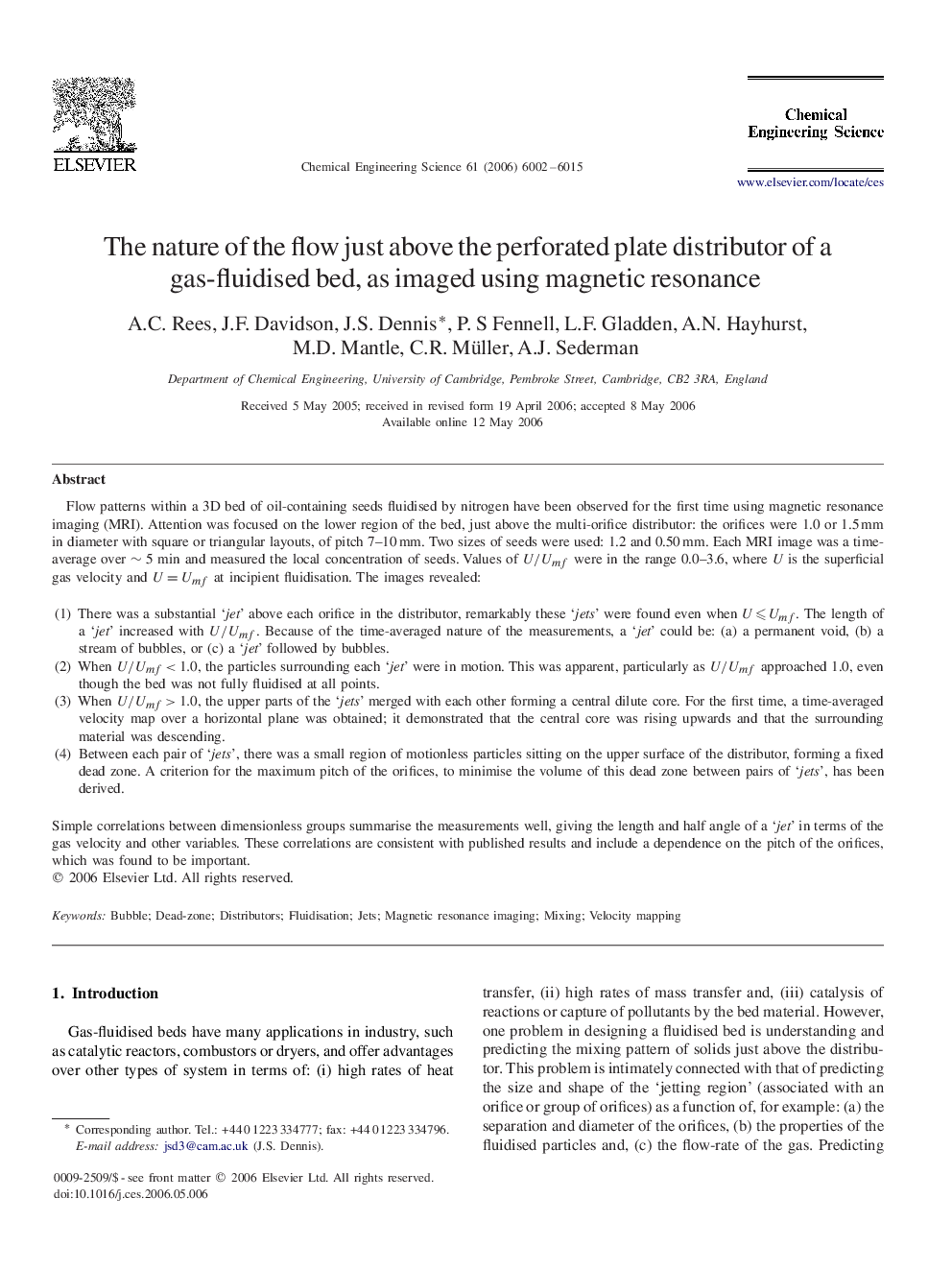| Article ID | Journal | Published Year | Pages | File Type |
|---|---|---|---|---|
| 159654 | Chemical Engineering Science | 2006 | 14 Pages |
Flow patterns within a 3D bed of oil-containing seeds fluidised by nitrogen have been observed for the first time using magnetic resonance imaging (MRI). Attention was focused on the lower region of the bed, just above the multi-orifice distributor: the orifices were 1.0 or 1.5 mm in diameter with square or triangular layouts, of pitch 7–10 mm. Two sizes of seeds were used: 1.2 and 0.50 mm. Each MRI image was a time-average over ∼5min and measured the local concentration of seeds. Values of U/UmfU/Umf were in the range 0.0–3.6, where U is the superficial gas velocity and U=UmfU=Umf at incipient fluidisation. The images revealed:(1)There was a substantial ‘jet’ above each orifice in the distributor, remarkably these ‘jets ’ were found even when U⩽UmfU⩽Umf. The length of a ‘jet ’ increased with U/UmfU/Umf. Because of the time-averaged nature of the measurements, a ‘jet’ could be: (a) a permanent void, (b) a stream of bubbles, or (c) a ‘jet’ followed by bubbles.(2)When U/Umf<1.0U/Umf<1.0, the particles surrounding each ‘jet ’ were in motion. This was apparent, particularly as U/UmfU/Umf approached 1.0, even though the bed was not fully fluidised at all points.(3)When U/Umf>1.0U/Umf>1.0, the upper parts of the ‘jets’ merged with each other forming a central dilute core. For the first time, a time-averaged velocity map over a horizontal plane was obtained; it demonstrated that the central core was rising upwards and that the surrounding material was descending.(4)Between each pair of ‘jets’, there was a small region of motionless particles sitting on the upper surface of the distributor, forming a fixed dead zone. A criterion for the maximum pitch of the orifices, to minimise the volume of this dead zone between pairs of ‘jets’, has been derived.Simple correlations between dimensionless groups summarise the measurements well, giving the length and half angle of a ‘jet’ in terms of the gas velocity and other variables. These correlations are consistent with published results and include a dependence on the pitch of the orifices, which was found to be important.
